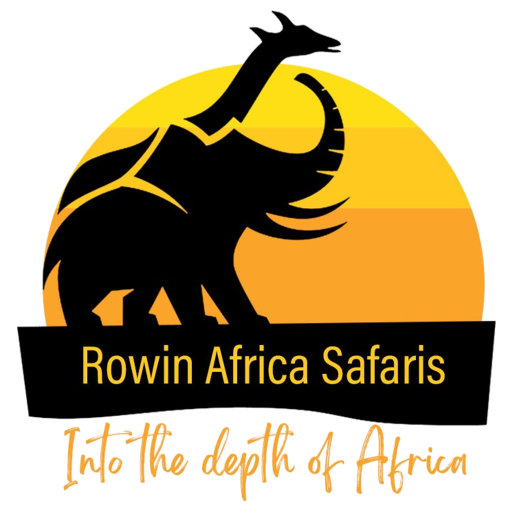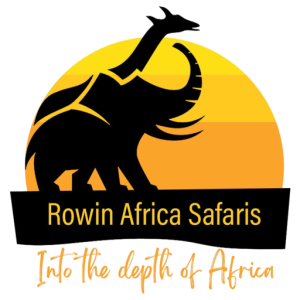Kenya Safari in Masai Mara National Reserve
One of the best wildlife places in Africa and the most well-known in Kenya is the Masai Mara national reserve, which is widely regarded as the continent’s top safari destination. The goal of creating the Masai Mara national reserve in 1961 was to safeguard a variety of species, including the Big Five.
This comprehensive guide to Kenya’s Masai Mara National Reserve, a top wildlife location, is provided for those who intend to visit.
Location & Geography
The Masai Mara national reserve is a relatively small reserve, covering only about 580 square miles. Its southern boundary, which also marks the start of the Serengeti national park and the border with Tanzania, is where the reserve begins. The remaining boundaries are bordered by private conservancies. The Masai Mara private conservancies share unfenced boundaries with the national reserve and are controlled by ecotourism businesses. They are owned by tribal people.
The distant western region of the reserve known as Mara Triangle is likewise administered by the Masai community as a non-profit conservancy.
Three significant rivers—the Sand, Talek, and Mara—intersect the Masai Mara National Reserve. The reserve’s Mara River is a well-known location because to the Great Wildebeest Migration’s dramatic Mara River crossing, in which tens of thousands of wildebeests and zebras attempt to cross the river as part of their annual migration. There are numerous trees and bushes growing along the river banks.
Masai Mara National Reserve’s wildlife
The Masai Mara National area is renowned for being home to an incredible variety of animals and birds. The area also gives excellent chances to see the Big Five, which include lions, cape buffaloes, elephants, leopards, and rhinoceroses. In the Masai Mara national reserve, there are additionally antelopes, topis, elands, oribi, waterbuck, gazelles, hippos, and crocodiles.
There are around 450 bird species in the Masai Mara national reserve, including the Abdim’s Stork.
African wood owls, finfoots, and The hawk eagle of Ayres bunting with a cinnamon breast, Bustard of Denham, massive kingfishers, the grey-crested helmet shrike tit in grey penduline, Birds like Jackson’s widowbird, Hildebrandt’s starling sluggish cisticola, Ostrich, grenadier in purple tit, red-throated Toraco Ross, rufous-bellied heron, rufous-throated wryneck, and rosy-throated longclaw stork with a saddle-bill, Turaco of Schalow, Director Bird, Silverbird, Ground hornbills in the south, African sparrow among others, Temminck’s course and Tabora Cisticola
The yearly wildebeest migration between the plains of Serengeti National Park and Masai Mara National Reserve, which involves about 1.5 million wildebeests traveling with zebras and antelopes, is another prominent feature of Masai Mara National Reserve. Between July and November, the Mara river is crossed by the migrating animals in the Masai Mara national reserve.
Safari activities to do in Masai Mara national reserve
Game Drives
One of the best sites in the world to go game viewing is the Masai Mara national reserve, which offers two game viewing excursions: a morning game drive and an afternoon game drive. You can see a variety of creatures on game drives, including lions, cape buffaloes, elephants, leopards, and rhinoceroses, as well as antelopes, topis, elands, oribi, waterbuck, gazelles, hippos, and crocodiles.observing birds
Masai Mara national reserve is listed among the important birding sites in Kenya hosting over 450 bird species which can easily be spotted, these birds include Abdim’s StorkAfrican finfoot, African wood owl, Ayres’s hawk eagle, Cinnamon-breasted bunting, Denham’s bustard, Giant kingfisher, Grey-crested helmet-shrike, Grey penduline tit, Hildebrandt’s starling, Jackson’s widowbird, Lazy cisticola, Ostrich, Purple grenadier, Red-throated tit, Ross’s turaco among others.
Hot Air Balloon safaris
One of the most thrilling safari activities available in the Masai Mara National Reserve is a hot air balloon safari. This incredible safari activity offers soaring views over the Masai Mara plains and a variety of animals that are housed in the unending savannah plains. The final meal of a hot air balloon expedition is a champagne breakfast.Photography safaris, equestrian safaris, and cultural excursions with the Masai people are some of the additional safari pursuits available in the Masai Mara National Reserve.
Where to Stay in Masai Mara national reserve
There are several places to stay in the Masai Mara national reserve, both inside and outside the reserve. These places to stay range from permanent lodges to tented and mobile camps. These lodgings are further divided into three categories: luxury, moderate, and low-cost.
Note: As a traveler, it’s crucial to determine which section of the reserve you want to base yourself in before deciding which lodging facility to stay at.
Due to their proximity to Nairobi, the Masai Mara’s central and eastern regions receive the most visitors. In these areas, lodging options include Keekorok Lodge and Mara Simba Lodge.
There are just 2 lodging options in the Western Mara Triangle, which includes the Mara Serena Safari Lodge and Little Governor’s camp. This location is more distant and challenging to access but often offers more rewarding wildlife viewing experiences.
Beyond Bateleur camp, Elephant pepper camp, Angama Mara, and more lodging options are available in the Masai Mara National Reserve.
Weather & When to Go To Masai Mara national reserve
Kenya is located close to the equator, and as a result, the temperatures are rather constant throughout the year. The Masai Mara National Reserve sees two different wet seasons: the short rainy season from December to January and the long rainy season from March to May. The typical high temperature is around 86 degrees Fahrenheit, and the typical low temperature is about 68 degrees Fahrenheit.
The lengthy dry season, which runs from June to November, is said to be the ideal time to visit the Masai Mara National Reserve since it corresponds with the Great Migration. Additionally, since they gather at water sources, animals are simple to spot.
Getting To Masai Mara national reserve
The Masai Mara National Reserve is located roughly 170 miles west of Nairobi, the capital of Kenya. From Nairobi, it takes 6 hours to travel through Narok Town to reach the reserve due to the good condition of the roads. Due to strong downpours, the roads become impassable during the rainy season, yet 4X4 vehicles can still travel through them.
Flying is another option for reaching the Masai Mara National Reserve; among the airstrips that serve the reserve are those at Keekorok, Serena, Musiara, Siana Conservancy, Ol Kiombo, and Ngerende. Masai Mara may be reached by plane in about 45 minutes from Nairobi’s Wilson Airport; numerous domestic airlines, including Safarilink and AirKenya, operate these flights.


